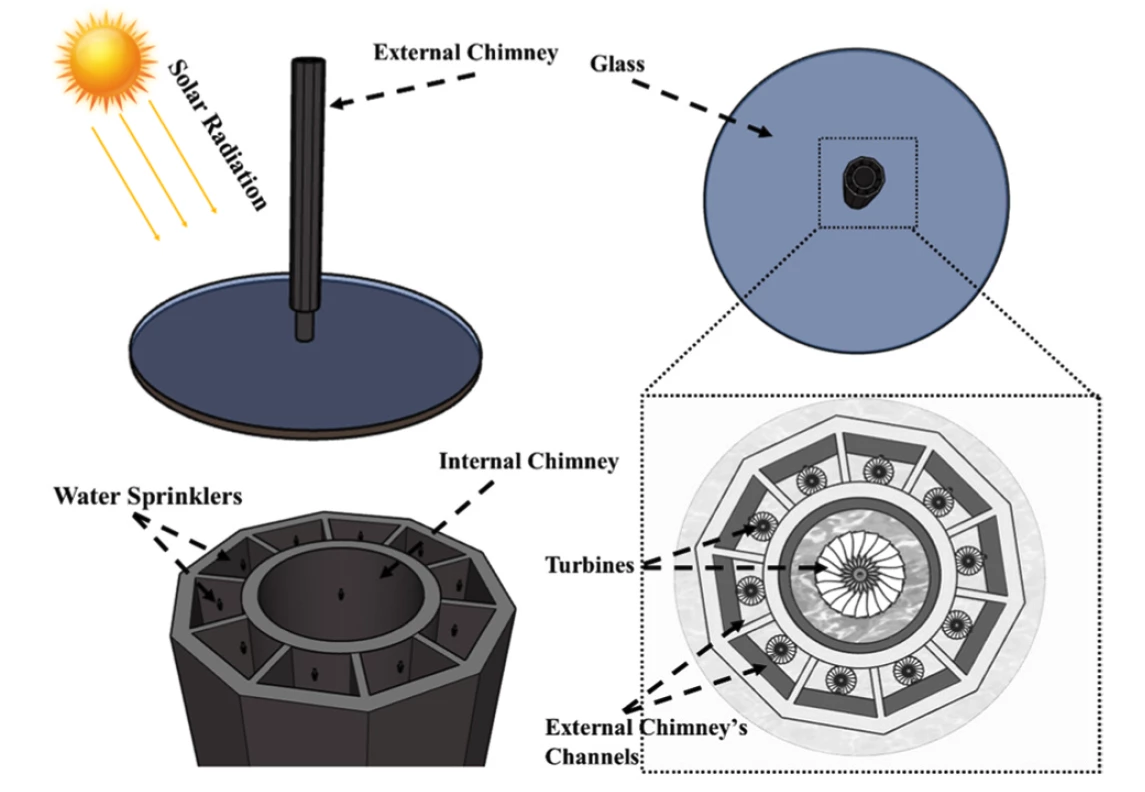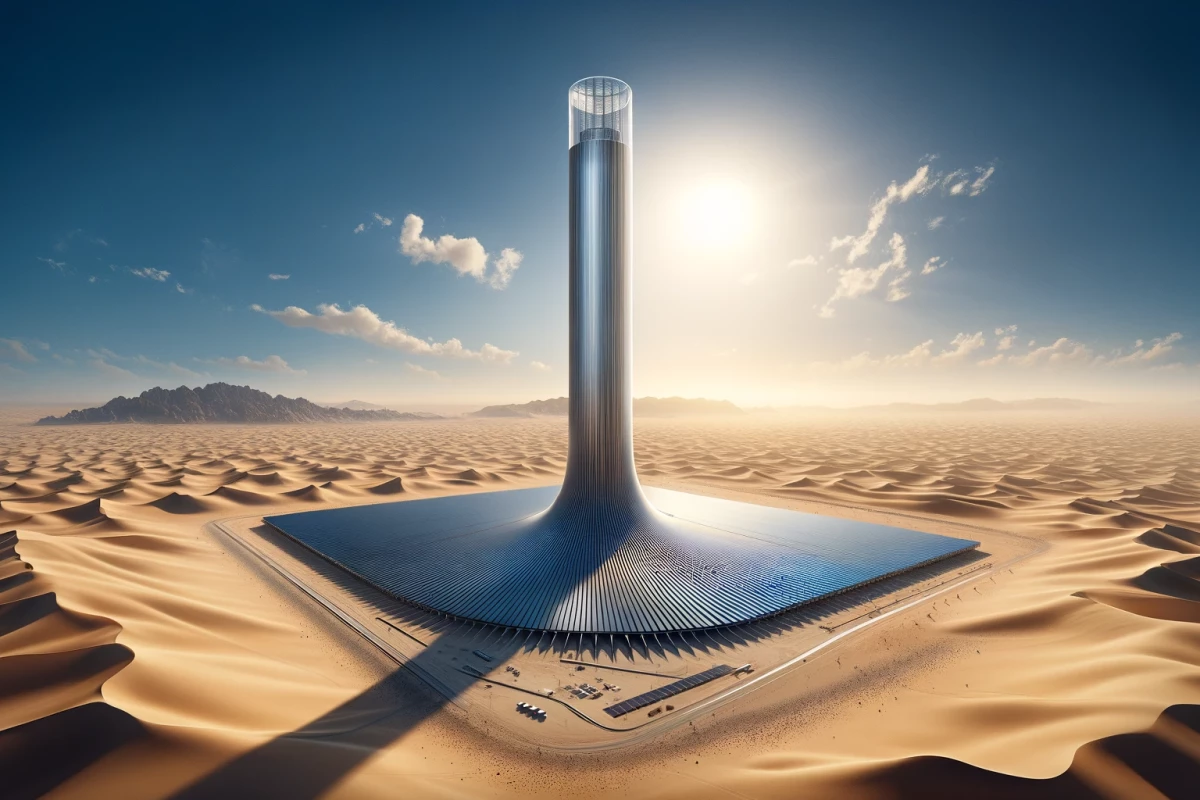Researchers in Jordan and Qatar have come up with a remarkable design for a "twin technology solar system" (TTSS) capable of generating clean energy 24/7. This double-action design promises more than twice as much energy as a standard solar updraft tower.
As its name suggests, the TTSS combines two tower-style technologies into a single design: a solar updraft tower and a cooling downdraft tower. These are integrated into a single tower, with the updraft tower coming up through the middle.
A solar updraft system works by heating up the air at ground level, then using the fact that hot air rises to funnel that air up a tall tower with turbines in it. The air is heated under a large roof covering a vast collection area, made from a greenhouse-type material designed to trap as much heat as possible.
These have been built at experimental scale, but not yet at a commercial scale, since they're typically very large, tall structures to ensure a good temperature differential. Thus, capital costs are high and they're viewed as risky.

A cooling downdraft tower, on the other hand, forces air downwards to turn another turbine. In this design, that's accomplished by spraying a fine mist of water into the ambient air at the top of the tower, making it both cooler and heavier and sending it downward.
The TTSS design places an updraft tower in the middle, and surrounds it with 10 downdraft towers running around the outside, such that it can operate in both updraft and downdraft modes simultaneously.
The research team, from Jordan's Al Hussein Technical University and Qatar University, modeled a TTSS tower some 200 m (656 ft) tall and 13.6 m (45 ft) in diameter, with a 250-m (820-ft) diameter collector underneath it. The inner cooling tower's diameter was 10 m (33 ft), leaving a 1.8-m (5.9-ft) gap all the way around. This gap was partitioned into 10 separate downdraft towers, with water misting systems at the top and turbines at the bottom. The location chosen was near Riyadh City – hot, dry desert areas are ideal for these designs.
In simulation testing using local weather data, the team estimated that such a system would generate a total of around 753 megawatt-hours of energy annually, with the external downdraft towers running around the clock to deliver about 400 megawatt-hours, and the updraft tower working more efficiently under the hot sun to contribute around 350 MWh.

These figures, according to the research team, were 2.14 times as much as similar updraft-only designs – which makes sense given the updraft/downdraft splits above. They could also go some way toward addressing the offset between energy supply and demand that you can get with most solar projects.
The team didn't attempt to place an LCoE (levelized cost of electricity) on it at this point, or draw any sort of cost comparison to, say, a solar photovoltaic array plus battery energy storage. And it noted that in the areas where the TTSS system would be most effective – hot, dry desert cities – it probably won't be easy to get hold of enough water to run the downdraft system.
Still, an interesting idea, and a demonstration of the fact that there are many, many ways to drive turbines to make electricity.
Source: Energy Reports via the consistently excellent Recharge News





